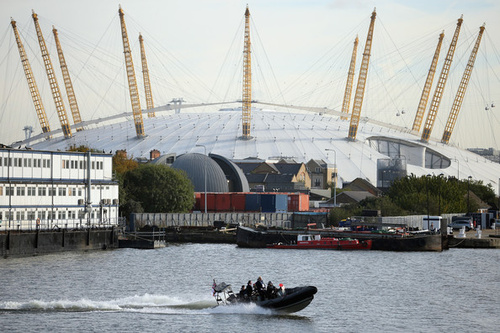Don't miss any stories → Follow Tennis View
FollowScratching the Surface: Why The World Tour Finals Should Stay on Indoor Hard Courts
The ATP World Tour Finals in London's O2 Arena are set to put another spectacular bookend on another enthralling year in tennis. It is a scenario that has been played out before, and it is a scenario that will be played out again at least for the next two years. No one disputes the fact that the organizers in London have done and will continue to do a phenomenal job staging this event, but that has not stopped some from questioning whether or not changes should and need to be made.
One of the changes under discussion has been whether or not the ATP should rotate what surface is used for the season-ending championships. Historically, the surface used for this prestigious event has changed very little. It never has been contested on clay and only once on grass, nearly 40 years ago. In more recent times, it was hosted on an outdoor hard court in Houston, Texas from 2003-04, and it has been on some version of an indoor hard court ever since. These are facts that have some, like Rafael Nadal, crying foul and clamoring for a rotation of surfaces. Others, like Roger Federer, fully support maintaining the status quo of keeping the tournament on an indoor hard court. Although the views of these men, other players and their fans are undoubtedly colored to a certain degree by their respective performances on the surface, keeping the ATP World Tour Finals on an indoor hard court makes the most sense.

First, staging the ATP World Tour Finals on an indoor hard court is a natural fit simply because of its place in the tennis calendar. It is preceded by three weeks of indoor hard-court tennis, including the 500-level events in Basel and Valencia, and the Paris Masters 1000 tournament. Just as the Masters 1000s in Madrid and Rome lead to Roland Garros, or Canada and Cincinnati lead to the US Open, these indoor events provide a natural buildup to the year’s final tournament. Additionally, Tournament Director Andre Silva argued that suddenly switching from indoor hard courts to a surface where players have not played recently, such as clay or grass, could make players uncomfortable. That type of a sudden switch is also more apt to lead to injuries.
The total number of indoor hard-court tournaments is another factor to consider. There are only 17 such events each year, which is less than the 20 on outdoor hard courts and the 22 on clay (of which only the Brazil Open is played indoors), making grass the only surface used less often with just six tournaments. Furthermore, only one of the nine Masters 1000s is played on indoor hard courts, and none of the majors are. If the world’s best are expected to showcase their abilities on the biggest stages of the various surfaces, should that not also include indoor hard courts? If so, it is hard to imagine a more fitting event than the ATP World Tour Finals to test their indoor hard-court skills, for it is the tournament that many consider to be the most prestigious behind the majors.
That prestige attached to the ATP World Tour Finals makes it an attractive package that other cities outside of London would like to host. That is another reason why leaving it as an indoor hard court event makes more sense. Although it has been proven that tennis can be played on indoor clay and even on indoor grass, an indoor hard court is more practical and easier to maintain. It also leaves the door open for any nation to put in a bid to host it, since it is unaffected by outdoor elements such as rain or approaching winter. Staging this event in all corners of the globe is a great way to grow interest in the sport, so it makes sense to leave it in a format that is most conducive to making that a reality.
These are just some of the reasons why the World Tour Finals need to be left on indoor hard courts. Although the debate will undoubtedly continue, a decision to rotate surfaces would be a disservice to the game. Indoor hard courts present their own unique challenges, and like outdoor hard courts, clay, and grass, those challenges deserve to be showcased on a grand stage.
That stage is the ATP World Tour Finals.










